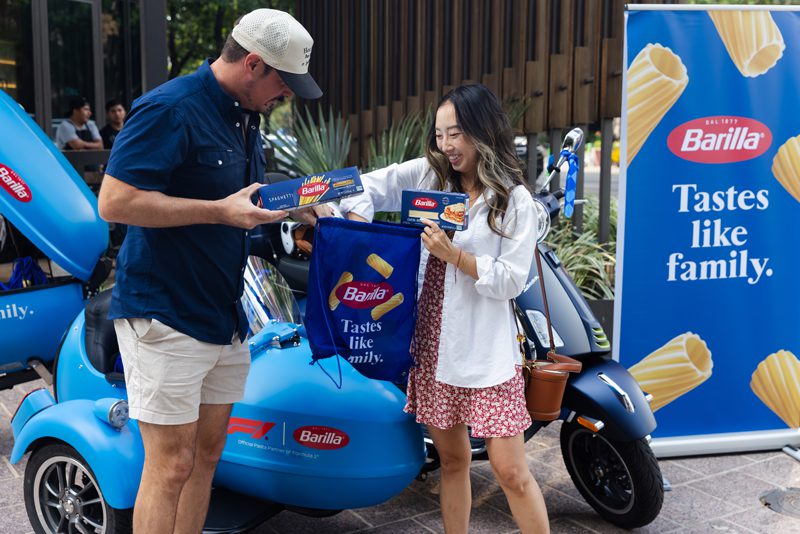SMALL AIRLINES FLY in a turbulent market. With competitors buzzing at their tails, independents must garner customer loyalty and assert their brand without the support of a national airline. But even regionals that are part of a large airline often must find their own unique route toward relationship building.
Tower Air Inc., based at John F. Kennedy International Airport, New York, is an independent seeking to set its brand in customers’ minds with an in-flight magazine. A discount airline that shuttled mostly Jewish passengers between New York and Tel Aviv, Israel, Tower has added seven more destinations -Paris; Athens, Greece; San Juan, Puerto Rico; Santo Domingo, Dominican Republic; Miami; Los Angeles and Fort Lauderdale, FL-and wants to lure vacationers to fly Tower to them.
With “Flight,” debuting July 15, the airline wants to show “that it is a cistAir is on par with travel on major airlines, it costs passengers’ less, they got good value for the money, and they had fun,” says Diana Pohly, president and CEO of custom publisher Pohly & Partners, Boston, which is producing the magazine.
“Ideally, the new magazine will build customer loyalty and brand awareness for Tower Air, [and] also give our customers a better sense of who we are as an airline,” says Morris K. Nachtomi, president, CEO and chairman of the board of directors.
That brand identity is, in a word, fun. So, the glossy, 36-page bimonthly is “colorful, friendly, happy and contemporary,” says Pohly, featuring personal anecdotes passengers can relate to, like, “Dave’s fishing vacation in the Dominican Republic. The idea is to inspire people to not only have a good time on this vacation but to consider Tower for future vacations.”
Articles may cover the nine destinations again and again because Tower’s target demographic doesn’t travel much. They are largely blue-collar, middle-class families or single people who can afford a vacation only once or twice a year. There are fewer Jewish passengers; some 60% are Hispanic.
In general, because magazines tend to possess “an inherent credibility,” a custom publishing vehicle is a good, cost-effective way to talk to recent customers, Pohly says.
With no direct mail on tap and a fledgling frequent flyer program of 2,500 members, “Flight” is more than a branding device for Tower; its “the nucleus of our marketing program,” says Abby Nachtomi, domestic sales manager.
Another customer awareness program is occurring in Minneapolis, where a David and Goliath story is unfolding. Upstart Sun Country Airline (formerly a charter service) opened its doors as an scheduled carrier June 1, flying non-stop to 16 U.S. cities. The independent is taking on Northwest Airlines Corp.-the only major airline using Minneapolis’ Hubert H. Humphrey Airport as a hub-with a marketing campaign that pits its lower pricing scheme against Northwest’s and challenges the consumer to take a stand for competition.
Sun Country touts one-way fares that are half the price of its round-trip, no time restrictions or overnight Saturday stays and no advance reservations required.
Response to a March direct mail campaign to 126,000 former charter customers offering discounted tickets is still being tallied. But a humorous print ad campaign in the Twin Cities’ daily newspapers featuring Sun Country’s president Bill La Macchia has proved a hit.
The ads invite readers to clip a “Hey Bill” coupon if they are interested in bringing an affordable airline to Minneapolis/St. Paul and if they want a chance to fly free for a year. Coupon clippers fill in their name, address, telephone, e-mail name and check yes to receive future promotions. This information will feed the 250,000-name database. Customer groups emerging are businesspeople who take few trips, spur-of-the moment business or leisure travelers and families buying multiple tickets.
“Since April 21, easily 50,000 coupons have come in,” boasts spokesperson Lori Barghini. “The campaign was a true test that we’ve tapped a nerve and I definitely think we’ve done that.”
That nerve resides in the citizens’ memory of a 13-day Northwest pilots’ strike last summer that halted Northwest’s flights, slowed air travel nationwide and “really disrupted life here for two weeks,” says Barghini, leading to press reports about “how much more you pay to live in a hub city.”
Referring to Sun Country as “another competitor,” Marta Laughlin, director of media relations for Northwest, says: “1998 was a very hard year. I think most customers value the history Northwest has had in the Twin Cities and that of 2,000 of their friends and neighbors who work for Northwest.” She denies Northwest reduced fares to cities Sun Country flies to. “What we’re selling is high frequency, lots of flights to lots of destinations every day non-stop,” she says.
Building brand and loyalty are crucial to any airline, but regionals such as Northwest Airlink that draw on their national’s multi-million-name frequent flyer databases have an edge on competition, right? Not necessarily, says Jim Conway, director of passenger marketing, Northwest. “What we find is most people are not 100% loyal to an airline. They have three or four frequent flyer cards in their pocket,” he adds.
Moreover, even though such regionals serve the nationals’ flight schedules by connecting passengers from smaller cities, they still have unique marketing goals. For example, repeat business is “absolutely critical,” points out Philip Reed, vice president of marketing for one of Northwest’s regionals, Northwest Airlink. The Airlink serves 31 small and mid-sized southeastern cities from the Memphis, TN, hub. “It’s a small market and quite frankly, there aren’t a lot of passengers,” Reed says. “If you’ve got a guy who flies from Hattiesburg, MS, six times a year, you want to keep that guy.”
The way to do that, says Reed, is the original one-to-one relationship marketing: customer service. For the last 15 months, Reed has been surveying travelers-polling them on aircraft cleanliness and comfort, ease of transfer, in-flight service and value for fare among an array of other queries. “We benchmark ourselves against our own progress,” Reed says. Comments from customers (who are 10% business, 90% leisure) have resulted in the addition of baby-changing tables in aircraft restrooms to accommodate travelling moms and a $250,000 investment in improved coffee service.
Customer service at Midwest Express Airlines, Milwaukee, has helped win the regional top awards from Consumer Reports, Zagat Airline Survey and Conde Nast Traveler. The airline, which serves 45 cities, has built a million-name database that can pinpoint activity down to how many times a customer has flown to a given city and when he flew there, a co-branded MasterCard and affinity partners. Most of its flights are non-stop to the 45 cities it serves-a boon to Midway’s mainstay, typically an upper-income male professional.
But it’s the service that really woos them. There are one-third fewer seats “so there’s more legroom and just two seats on either side of the aisle,” and food for which it spends $10 per meal, compared with the standard airline expenditure of $3 per meal, says Jim Reichart, director of advertising and marketing communications.
“One of the things that we find is that once people have flown on us once, they are much more likely to list us as their preferred airline,” Reichart notes. “We attribute that to service being measurably better than our competition,” Reichart says.
“When you’re in the airline business, you’re pretty conscientious,” Northwest Airlink’s Reed says. “Our airlines and fares aren’t much different. It’s that little extra that produces a product differentiation that will take customers to you as opposed to the competition.”
 Network
Network

